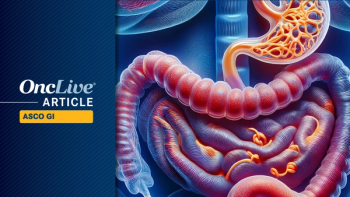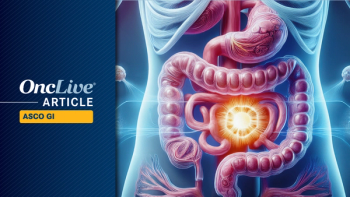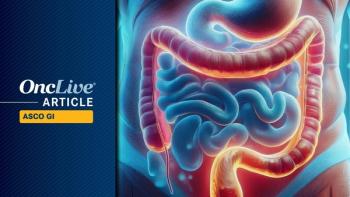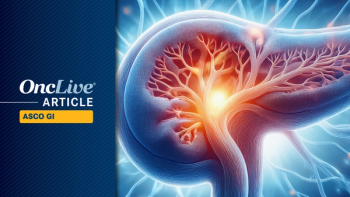
Eprenetapopt/Azacitidine Shows Encouraging Responses in High-Risk MDS/AML
The combination of eprenetapopt and azacitidine led to high objective response rates and complete response rates in patients with TP53-mutated myelodysplastic syndrome and acute myeloid leukemia.
The combination of eprenetapopt (APR-246) and azacitidine led to high objective response rates (ORRs) and complete response (CR) rates in patients with TP53-mutated myelodysplastic syndrome (MDS) and acute myeloid leukemia (AML), according to results from the phase 2 GFM-APR trial that were presented during the 2020 European Hematology Association Congress.1
Among response-evaluable patients (n = 39), the objective response rate (ORR) was 77% and the complete response (CR) rate was 49%. In patients with MDS, the ORR was 75% and the CR rate was 57%. Patients with AML who had 20% to 30% blasts had an ORR and CR rate of 78% and 33%, respectively.
In the intention-to-treat (ITT) population (n = 52), the best ORR was 58% (n = 30), with a CR rate that increased from 25% after cycle 3 to 33% after cycle 6. Among response-evaluable patients, the best ORR was 77%, with a CR rate that increased from 33% after cycle 3 to 44% after cycle 6.
“The data from this ongoing trial of eprenetapopt with azacitidine continue to be very encouraging in these most difficult-to-treat [patients with] TP53-mutant MDS and AML, who not only have at least one TP53 mutation but the majority of whom also have high risk cytogenetic abnormalities,” lead study author, Thomas Cluzeau, MD, of Centre Hospitalier Universitaire de Nice, said in the press release.2
“We continue to observe ORR and CR rates in these patients that are substantially higher than the GFM’s experience with azacitidine monotherapy,” Cluzeau added. “Furthermore, with increased duration of follow-up, we now also see the emergence of highly encouraging overall survival (OS) that appears to be better than azacitidine alone or in combination with other agents in this very high-risk molecular group of patients with a TP53 mutation.”
TP53 mutations are present in 5% to 10% of de novo MDS/AML and 25% to 40% of therapy-related MDS/AML cases. TP53 mutations are found in 50% of patients with complex karyotype and 20% of patients with lower-risk MDS with isolated del5q. TP53 mutations confer poor and short-lived responses to treatment with intensive chemotherapy, hypomethylating agents, and patients have a high risk of relapse after undergoing allogeneic stem cell transplant.
The rationale for combining eprenetapopt with azacitidine was first validated in vitro and in vivo in SKM1 cell lines known to be mutated for TP53, said Cluzeau. The combination also showed synergistic activity ex vivo in patients with TP53-mutant bone marrow.
On January 30, 2020, the FDA granted a breakthrough therapy designation to the combination of eprenetapopt and azacitidine for the treatment of patients with MDS with a susceptible TP53 mutation. Prior to the 2020 designation, eprenetapopt received orphan-drug and fast-track designations from the FDA for use in MDS.
The GFM-APR trial enrolled patients with intermediate-, high-, and very-high risk MDS according to the Revised International Prognostic Scoring System, as well as patients with AML including those with greater than 30% marrow blasts. All patients had tumors that harbored a TP53 mutation.
Patients received 4500 mg/d of intravenous eprenetapopt over 6 hours on days 1-4 and 75 mg/m2 of subcutaneous azacitidine on days 4-10 every 28 days for 6 cycles. Patients who responded to the combination continued on therapy until relapse. Alternatively, patients could undergo allogeneic stem cell transplant followed by 36 mg/m2 of azacitidine on days 1-5 and 3700 mg/d of eprenetapopt on days 1-4 as maintenance therapy. All patients received a bone marrow evaluation every 3 months while on study treatment.
The primary end point of the study was response in ITT and response-evaluable populations according to the International Working Group (IWG) 2006 criteria for MDS and IWG 2003 criteria for AML. Secondary end points included safety, OS, duration of response, AML progression, and correlation of TP53 variant allele frequency (VAF) with nuclear p53 protein expression by immunohistochemistry (IHC).
Patients had a median age of 74 (range, 44-87), and the majority were male (n = 27). A total of 34 patients had MDS and 18 had AML. In the MDS cohort, the majority of patients were very-high risk (n = 25; 74%), followed by high risk (n = 5; 15%), and intermediate risk (n = 4; 12%). Additionally, the majority of patients had complex karyotype (n = 29; 85%) and monosomal karyotype (n = 27; 79%), in addition to del5q (n = 18; 53%).
In the AML cohort, 39% of patients (n = 7) had greater than 30% blasts, and 61% of patients (n = 11) had 20% to 30% blasts. Additionally, 89% of patients (n = 16) had complex karyotype, monosomal karyotype (n = 9; 50%), and del5q (n = 12; 67%).
The ORR within the ITT population consisted of a CR rate of 37% (n = 19), CR rate with incomplete hematologic recovery/molecular CR (mCR)/morphologic leukemia-free state (MFLS) rate of 10% (n = 5), partial response (PR) rate of 2% (n = 1), and stable disease with hematologic improvement rate of 10% (n = 5).
Within the response-evaluable population, the ORR consisted of a 49% (n = 19) CR rate, a 13% (n = 5) CRi/mCR/MLFS rate, a 3% (n = 1) PR rate, and a 13% (n = 5) stable disease rate with hematologic improvement.
According to the World Health Organization classification, the ITT-ORR in the MDS cohort (n = 34), 20% to 30% blasts (n =11) cohort, and greater than 30% blasts (n = 7) cohort was 62%, 64%, and 29%, respectively. Among response-evaluable patients, the ORR was 75% (n = 28), 78% (n = 9), and 100% (n = 2), respectively.
A total of 4 patients underwent allogeneic stem cell transplant, 2 of which started the combination as maintenance treatment.
At a median follow-up of 9.7 months, the median OS was 12.1 months (95% CI, 8.9-15.3) in the ITT cohort. The median OS in the MDS cohort, 20% to 30% blasts cohort, and greater than 30% blasts cohort was 12.1 months 95% CI, 8.9-15.3), 13.9 months (95% CI, 5.4-22.5), and 3.0 months (95% CI, 0-6.5), respectively.
The duration of survival was 13.7 months (95% CI, 11.7-15.7) and 2.8 months (95% CI, 1.2-4.4) among patients who received at least 3 or less than 3 cycles of treatment, respectively.
Investigators also sequenced 50 TP53 mutations in patients who completed 3 cycles of the combination (n = 39), showing that 78% (n = 39) were missense and 92% (n = 46) were located in the DNA-binding domain. A total of 95% (n = 37) of patients had at least 1 TP53 mutation in the DNA-binding domain.
Investigators also reported a significant decrease in the TP53 VAF with next-generation sequencing among responders from baseline to cycle 6 of treatment. Notably, 20 patients (51%) achieved TP53 NGS negativity over the course of treatment.
Regarding adverse effects (AEs) of interest, the rate of all-grade and grade 3/4 febrile neutropenia was 37% (n = 19). The most common all-grade AEs were neurological (n = 21; 40%) and consisted of ataxia (n = 13; 25%), cognitive impairment (n = 4; 8%), acute confusion (n = 4; 8%), isolated dizziness (n = 3; 6%), and facial paresthesia (n = 1; 2%).
Grade 3/4 AEs neurological AEs reported with the combination (n = 3; 6%) included ataxia (n = 2; 4%) and acute confusion (n = 1; 2%).
The neurological toxicity was manageable, said Cluzeau, and fully resolved within 5 days of discontinuation. No recurrences occurred among patients who required 1 (n = 13) or 2 (n = 4) dose reductions.
The neurological toxicity was related to lower glomerular filtration rate at treatment onset (P <.01) and higher age (P = .05).
Prior to cycle 3, 13 patients discontinued treatment as a result of severe infection (n = 6), progression (n = 4), and other reasons such as multiorgan dysfunction (n = 2) and consent withdrawal (n = 1). The 30- and 60-day mortality rates were 0% in the MDS cohort and 8% (n = 4) in the AML cohort. One patient discontinued early due to a secondary eprenetapopt-related AE.
The phase 3 clinical trial (NCT03745716), which is evaluating the combination for the frontline treatment of this patient population, completed accrual in June 2020. Results from the trial are expected in the second half of 2020.
References
1. Cluzeau T, Sebert M, Rahme R, et al. APR-246 combined with azacitidine (AZA) in PT53 mutated myelodysplastic syndrome (MDS) and cute myeloid leukemia (AML). A phase 2 study by the Groupe Francophone Des Myelodysplasies (GFM). Presented at: 2020 European Hematology Association Congress; June 11-21, 2020; Virtual. Abstract S181.
2. Aprea therapeutics presents from French phase 1b/2 clinical trial of APR-246 (eprenetapopt) and azacitidine in patients with TP53 mutant myelodysplastic sydromes and acute myeloid leukemia at the 25th EHA Annual Meeting. News release. June 12, 2020. Accessed June 13, 2020.

























































































